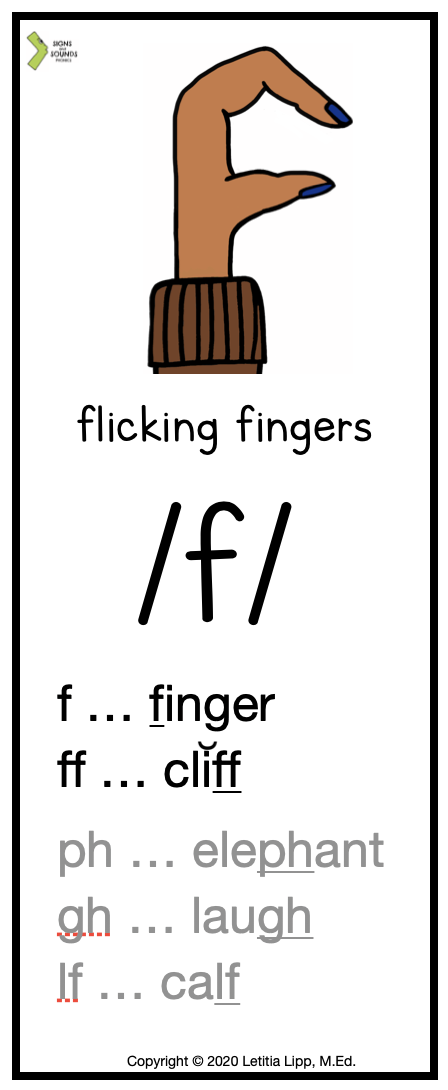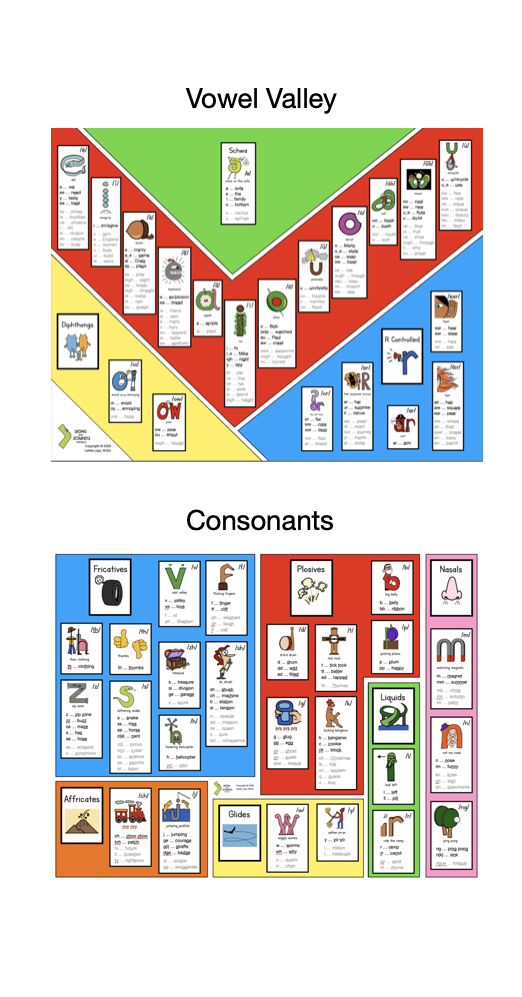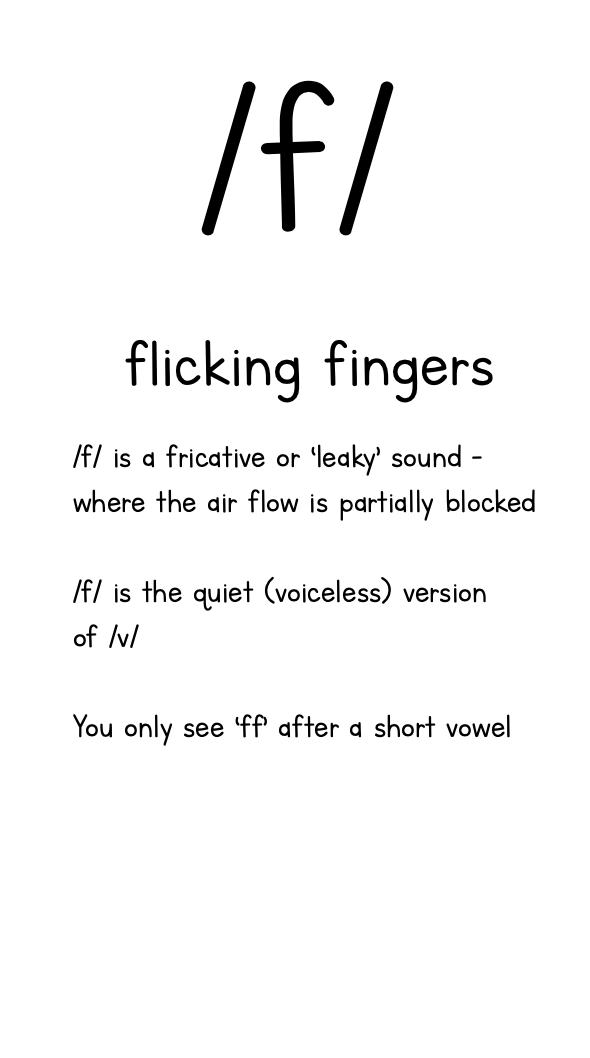|
Other Resources:
|
Sound Walls versus Word Walls
|
|
A sound wall is similar to a word wall, except that instead of displaying each word under the letter of the alphabet that it begins with, the words are displayed under their corresponding sounds. Let me explain … think about the word “who” [hoo]. On a word wall “who” would be displayed under the W, but unless you already knew that “who” starts with a W, you wouldn’t know to look there. (And why would you look there if you already knew how to spell it?) Since there are only 26 letters but 44 phonemes (give or take, depending on your dialect), it is inevitable that you are going to run into a number of words that don’t ‘work’ on a word wall. (More examples would be any word that starts with sh, th, ch, kn, wr, … ) On a sound wall, “who” would be displayed under the /h/ phoneme. (And words that start with the sh sound would be under the /sh/, and words that start with the ch sound would be under the /ch/, etc.)
But, you might ask, how am I going to fit 44 phonemes into a display when I can barely find room on my wall for 26 letters? Word walls only help students spell the words that are on the word wall, therefore the number of words under each letter can get quite long. Conversely, the words on a sound wall are an example used to illustrate how each sound can be spelled and, therefore, only one word is needed for the spelling of each sound. In this way, sound walls can help students spell all words without having to put them all on the wall.
A word wall is merely a mini-dictionary, while a sound wall is a visual reinforcement of what the students have been taught about letters and their sounds (phonics). The words on a word wall are placed based on their first letter. However, the words on a sound wall can be placed based on their first, middle or end sounds. If a student is trying to spell a word that has the long a sound in the middle, they can look to the sound wall to see the different ways to spell long a. This supports orthographic mapping - speech to print - which is the way writing works.
“Asking students to recall how to read and spell a word based on letter names rather than sounds [is] like asking them to memorize a suggested password. There is nothing to anchor the learning, and that’s not the way our brain works.” heggerty.org/blog/sound-walls/
But, you might ask, how am I going to fit 44 phonemes into a display when I can barely find room on my wall for 26 letters? Word walls only help students spell the words that are on the word wall, therefore the number of words under each letter can get quite long. Conversely, the words on a sound wall are an example used to illustrate how each sound can be spelled and, therefore, only one word is needed for the spelling of each sound. In this way, sound walls can help students spell all words without having to put them all on the wall.
A word wall is merely a mini-dictionary, while a sound wall is a visual reinforcement of what the students have been taught about letters and their sounds (phonics). The words on a word wall are placed based on their first letter. However, the words on a sound wall can be placed based on their first, middle or end sounds. If a student is trying to spell a word that has the long a sound in the middle, they can look to the sound wall to see the different ways to spell long a. This supports orthographic mapping - speech to print - which is the way writing works.
“Asking students to recall how to read and spell a word based on letter names rather than sounds [is] like asking them to memorize a suggested password. There is nothing to anchor the learning, and that’s not the way our brain works.” heggerty.org/blog/sound-walls/
Phoneme Cards
|
|
Resources
|
|
Available resources:
* Be sure to check back here, or on my Facebook page, for new or updated resources!
- Download individual cards, with the visual, phoneme and anchor words on one side and teacher information on the other side, to create your sound wall display
- Download a cheat sheet that explains how to label the phonemes and create a 'vowel valley'
- Download personal sound wall sheets for individual student reference
* Be sure to check back here, or on my Facebook page, for new or updated resources!
Contribute
|
|
Please feel free to download my resources at no cost to you. I did not create Signs and Sounds Phonics to make money, I made it to help kids learn to read and write. That said, if you have money that is ear-marked for these resources, please consider donating it instead. That way, not only will you have these resources to help your students develop their literacy skills, you will also be helping others. A win-win-win situation! If you like my resources, please direct others to this website. Finally, if you get a chance, send me a message or visit my Facebook page, to let me know how things are going. I'd love to hear what you and your students think about the resources!






